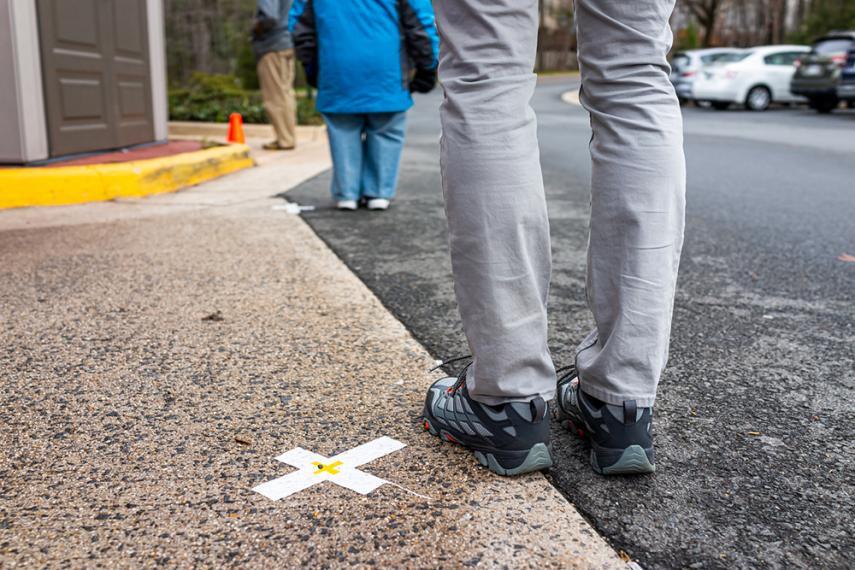Preventing and Understanding COVID-19

CEPS researchers are using novel methods to better understand and predict COVID-19 as well as mitigate its spread.
The University of Guelph’s Office of Research and the College of Engineering and Physical Sciences (CEPS) have awarded $126,000 to CEPS researchers for nine projects designed to support the battle against the COVID-19 pandemic and mitigate its impacts. Four of the projects focus on computer modelling to track and prevent the virus’ spread.
 Profs. Petros Spachos and Stefano Gregori, School of Engineering, are working with Prof. Konstantinos Plataniotis (University of Toronto) and PhD student Pai Chet Ng (Hong Kong University) to develop a secure contact tracing system using Bluetooth Low Energy (BLE) signals on smartphones. The system provides real-time notifications to users when they are near someone who has been diagnosed with the virus. At the same time, it alerts them to follow safe physical distance recommendations. The application is secure and does not transmit location or other data from user to user. The application could be particularly helpful for preventing the virus’ spread when larger-scale institutions, such as the University of Guelph, begin to reopen to students. This project has also been funded by the NSERC Alliance program and the OMESH Network.
Profs. Petros Spachos and Stefano Gregori, School of Engineering, are working with Prof. Konstantinos Plataniotis (University of Toronto) and PhD student Pai Chet Ng (Hong Kong University) to develop a secure contact tracing system using Bluetooth Low Energy (BLE) signals on smartphones. The system provides real-time notifications to users when they are near someone who has been diagnosed with the virus. At the same time, it alerts them to follow safe physical distance recommendations. The application is secure and does not transmit location or other data from user to user. The application could be particularly helpful for preventing the virus’ spread when larger-scale institutions, such as the University of Guelph, begin to reopen to students. This project has also been funded by the NSERC Alliance program and the OMESH Network.
“The system involves creating a front-end application for proximity detection and a back-end application for contact tracing,” says Spachos. “The application’s intent is to enhance physical distancing efforts while reducing resource burdens for contact tracing. The system could replace the need for personnel to do manual contact tracing when someone is diagnosed with the virus.”
 While Spachos and Gregori seek solutions to physical distancing on a user-level, computer science director and professor, Minglun Gong, is working with C-CORE on an automatic technique for monitoring crowd density in public spaces using a machine-learning-based crowd-counting algorithm. The algorithm, also developed by Gong, produces a density map, which is not only able to determine the number of people in a scene, but also identify areas of crowd density. The algorithm sorts through the video frames and alerts relevant officials about social distancing violations.
While Spachos and Gregori seek solutions to physical distancing on a user-level, computer science director and professor, Minglun Gong, is working with C-CORE on an automatic technique for monitoring crowd density in public spaces using a machine-learning-based crowd-counting algorithm. The algorithm, also developed by Gong, produces a density map, which is not only able to determine the number of people in a scene, but also identify areas of crowd density. The algorithm sorts through the video frames and alerts relevant officials about social distancing violations.
“The technology consistently outperforms and requires fewer resources than other state-of-the-art approaches in counting accuracy,” says Gong. “It can be used to handle crowd control and physical distancing violations in places such as airports, subway stations, parks, and beaches. This reduces the need for more labour-intensive monitoring techniques in large groups, such as head counting, and provides evidence-informed approaches to support physical distancing.”
 In addition to the challenges associated with contact tracing, there remains a gap in the supply of protective personal equipment (PPE) that will support front-line workers exposed to coronavirus. School of engineering professor Kevin Keener is working to address this gap by finding new ways to decontaminate used personal protective equipment using cold plasma. Cold plasma, a partially ionized gas that is generated when an electric field is applied to a gas such as air, is a cost-effective approach to sanitize and re-use PPE. Keener’s approach will focus particularly on PPE such as surgical masks.
In addition to the challenges associated with contact tracing, there remains a gap in the supply of protective personal equipment (PPE) that will support front-line workers exposed to coronavirus. School of engineering professor Kevin Keener is working to address this gap by finding new ways to decontaminate used personal protective equipment using cold plasma. Cold plasma, a partially ionized gas that is generated when an electric field is applied to a gas such as air, is a cost-effective approach to sanitize and re-use PPE. Keener’s approach will focus particularly on PPE such as surgical masks.
“High voltage cold plasma can deliver fast, effective results in a very short period of time with minimal inputs of air and electricity,” says Keener. “This disinfection method is cost effective and does not require toxic chemicals or significant water usage. Furthermore, the ionized gas generated by the cold plasma reverts to its original form, air, after just a few hours. It is remarkably sustainable, with a negligible impact on the environment, while being highly effective.”
 As the virus spread shifts and we prepare for a potential second wave, it will be important to understand how efficient these mitigation strategies are in limiting the spread of the virus. Prof. Daniel Gillis, School of Computer Science, is comparing these strategies to determine their effectiveness should we face another wave, combined with other factors such as a heightened influenza season. Gillis and team will analyze existing scientific literature, public health reports, and other data sources to inform their model. They will also collect certain data that describes the general population, such as geographic location and job occupation, leveraging this data to evaluate a second wave of COVID-19 without these mitigation strategies along with factors that could heighten the burden on our healthcare system.
As the virus spread shifts and we prepare for a potential second wave, it will be important to understand how efficient these mitigation strategies are in limiting the spread of the virus. Prof. Daniel Gillis, School of Computer Science, is comparing these strategies to determine their effectiveness should we face another wave, combined with other factors such as a heightened influenza season. Gillis and team will analyze existing scientific literature, public health reports, and other data sources to inform their model. They will also collect certain data that describes the general population, such as geographic location and job occupation, leveraging this data to evaluate a second wave of COVID-19 without these mitigation strategies along with factors that could heighten the burden on our healthcare system.
“We are leveraging a model we had developed previously to evaluate mitigation strategies for COVID-19 amidst the likelihood of a second wave,” says Gillis. “Our findings will inform public health policy at a local and provincial level, providing officials with an opportunity to put in the place the best mitigation strategies regardless of what the future holds for the pandemic. We anticipate this will build the groundwork for a larger-scale funding proposal.”
Read about the other five projects funded within CEPS focused on testing, diagnosing, and treating SARS-CoV-2 here.